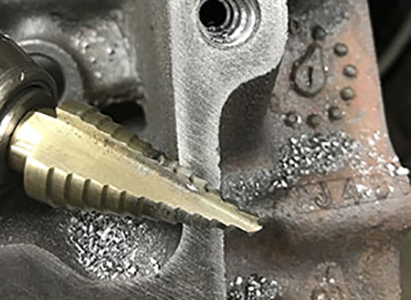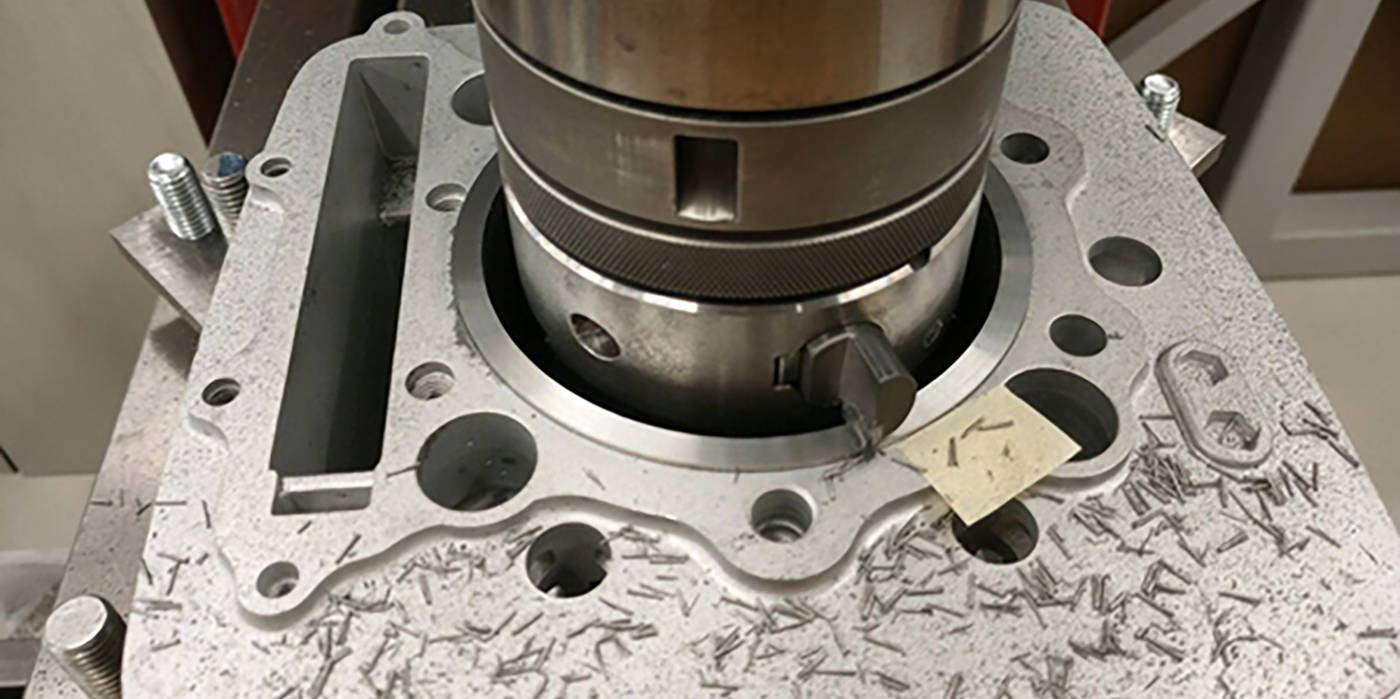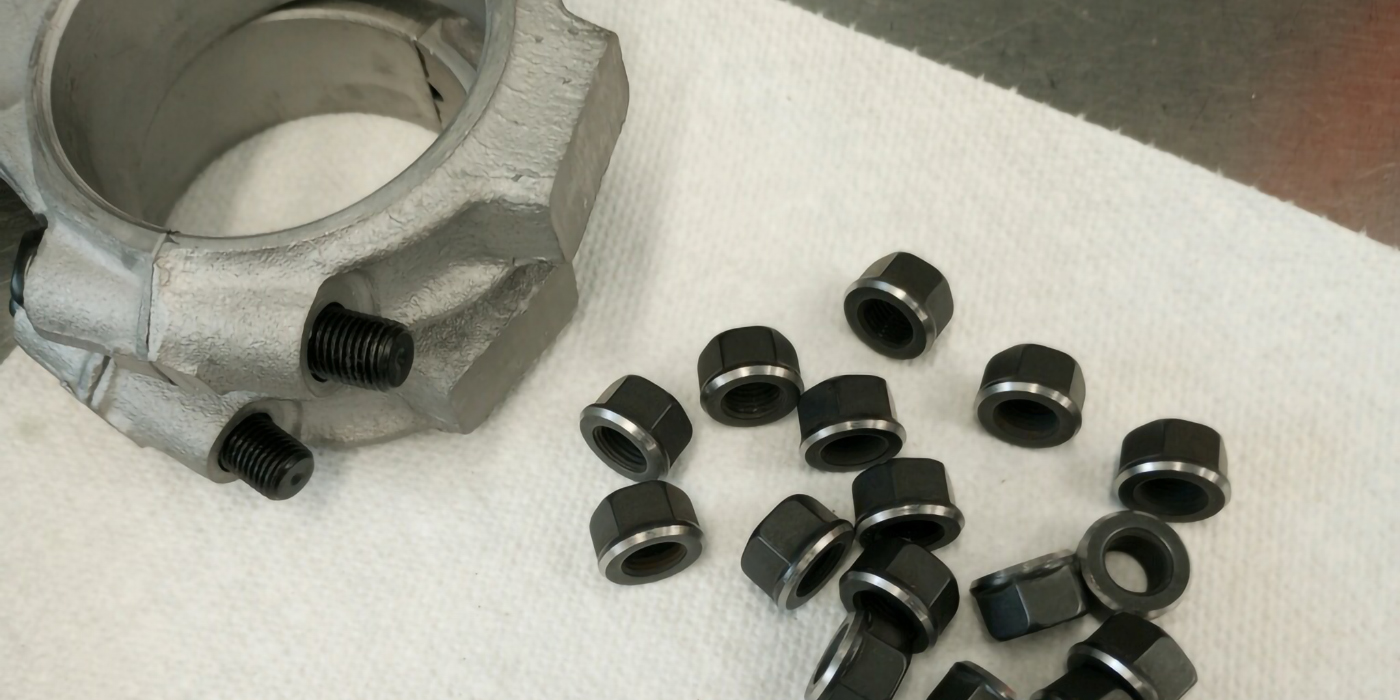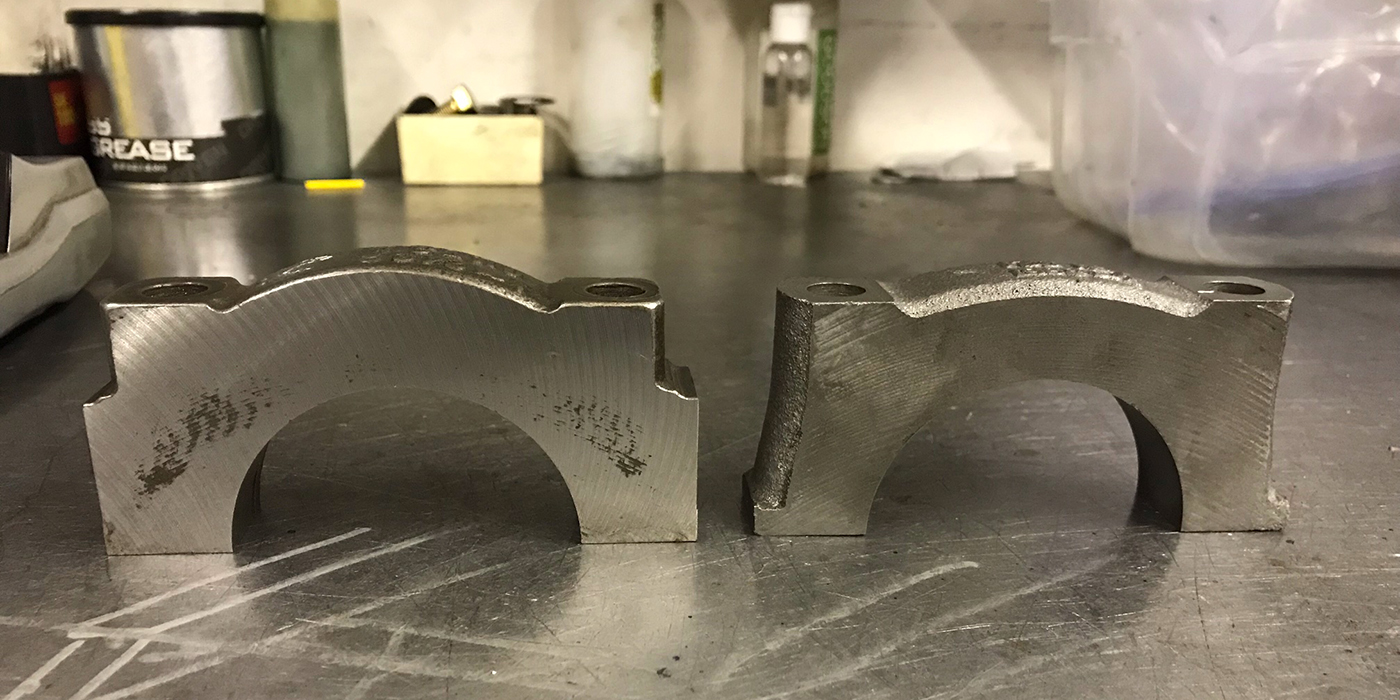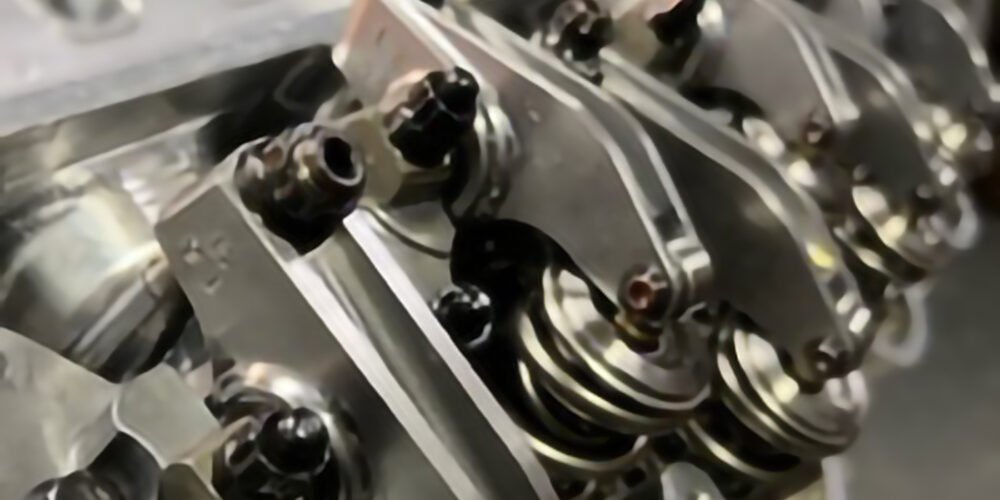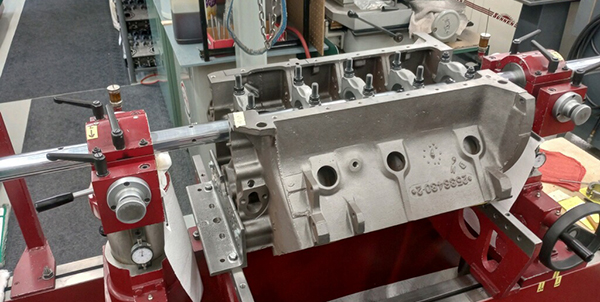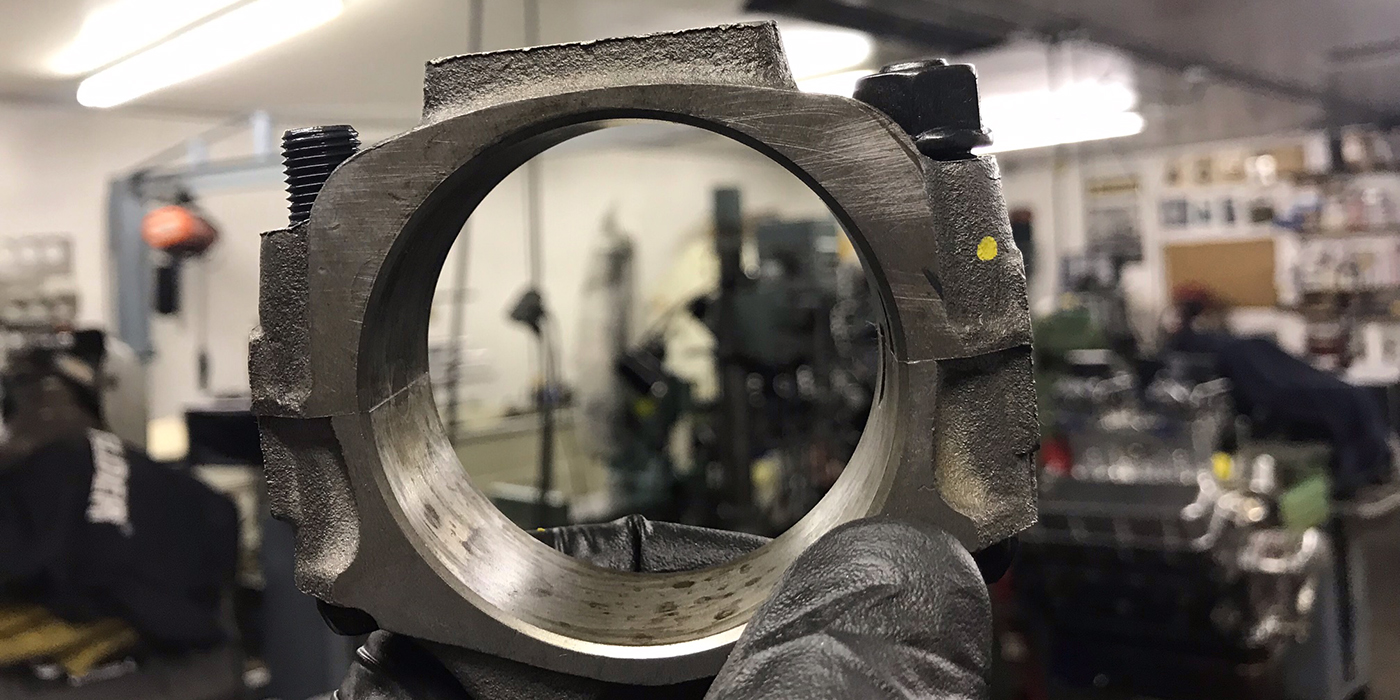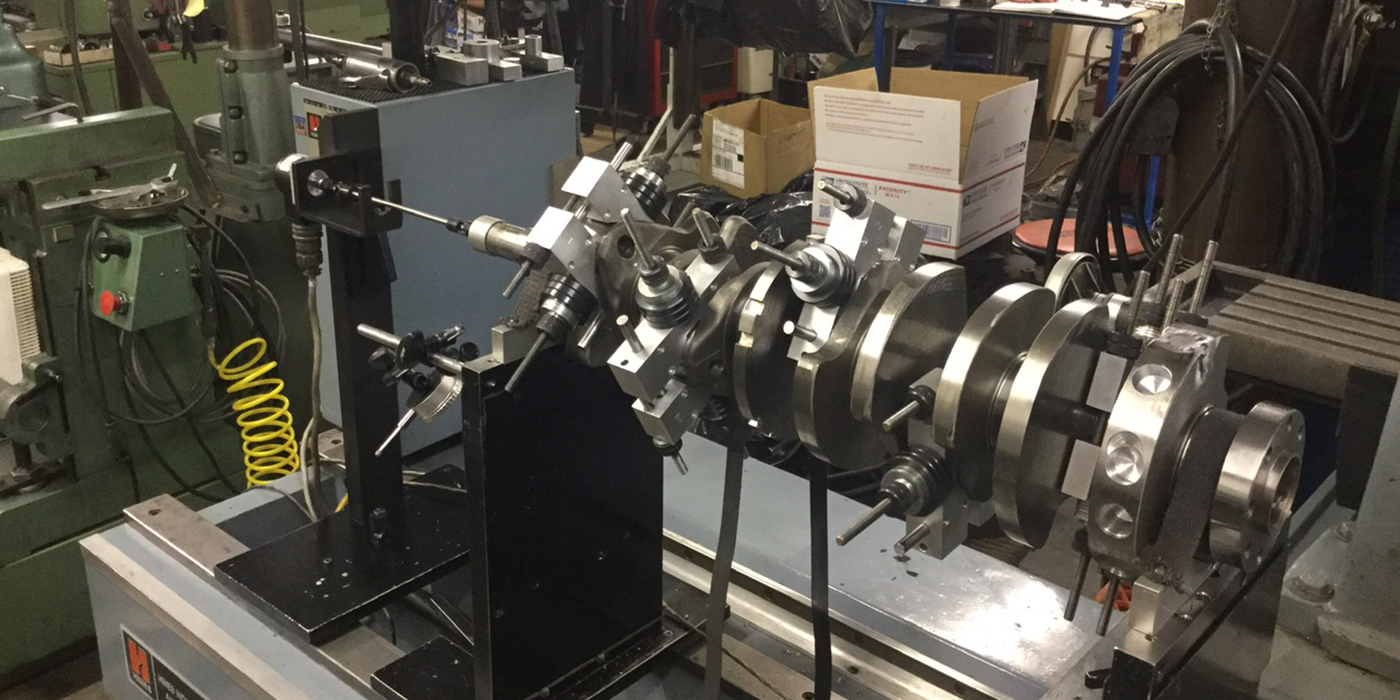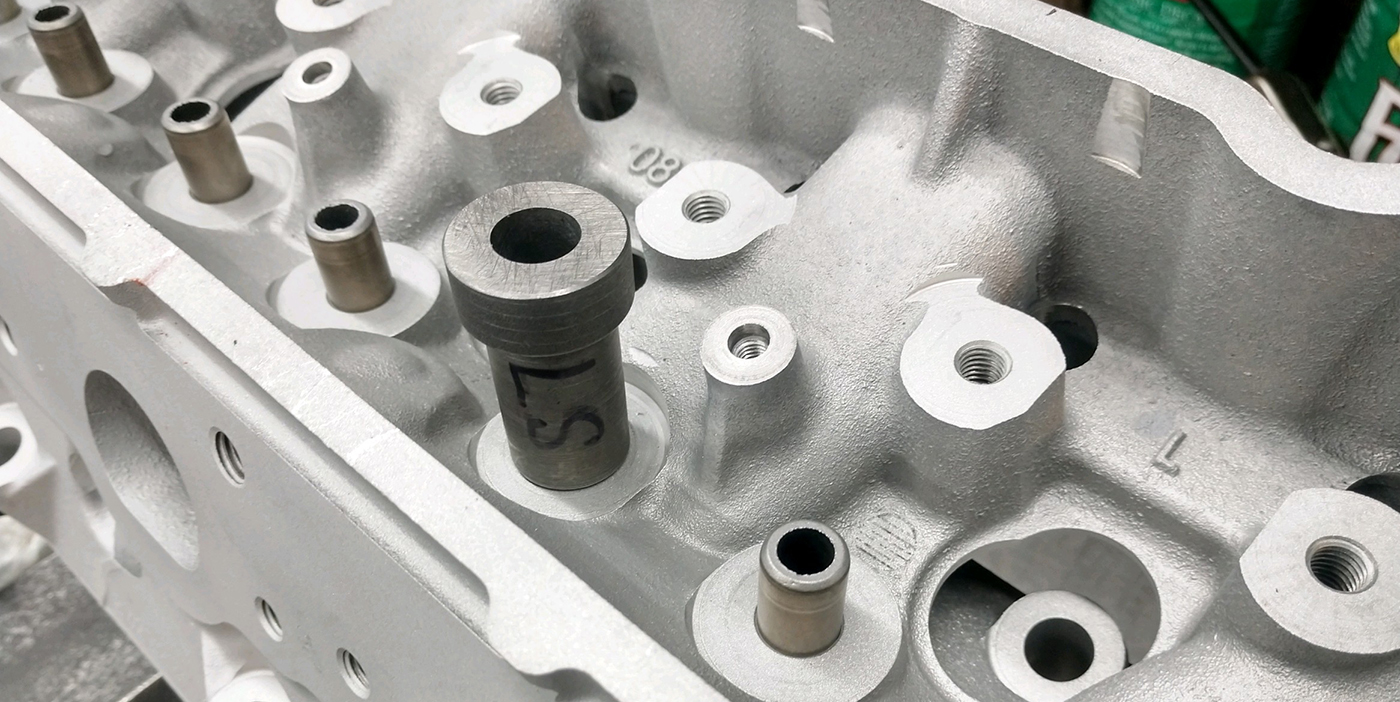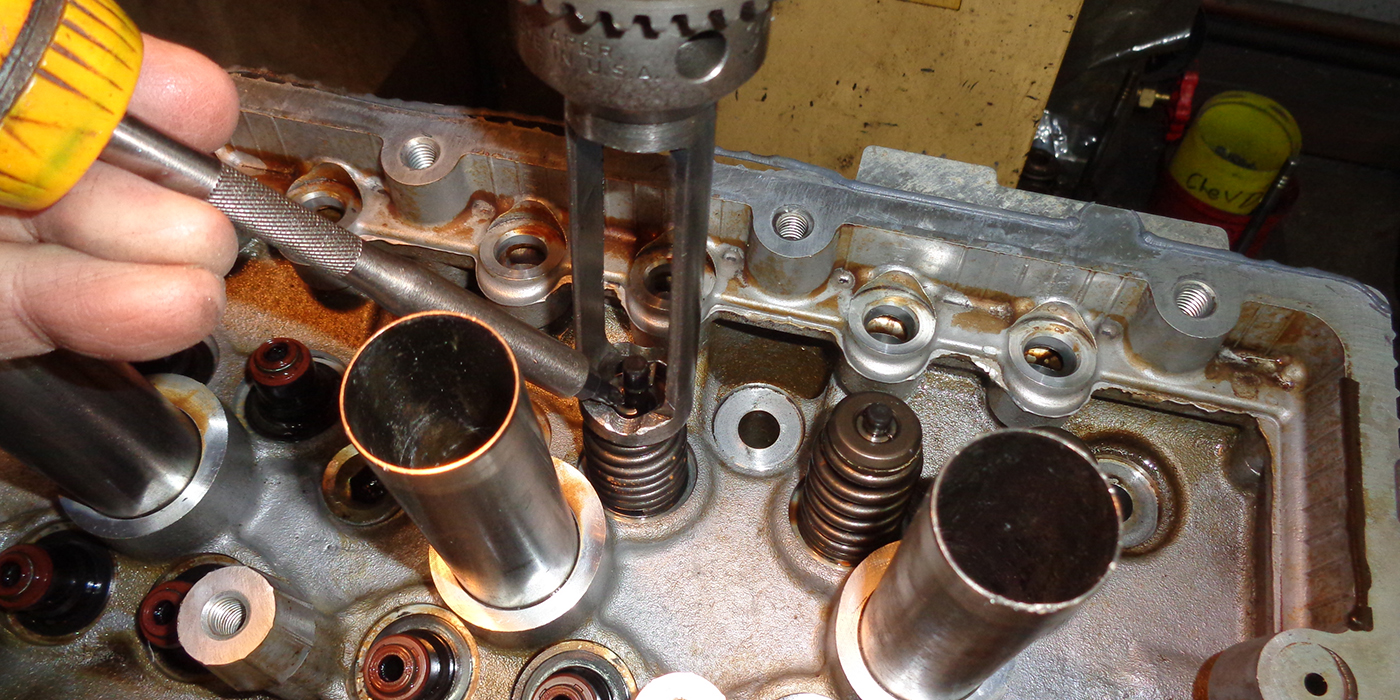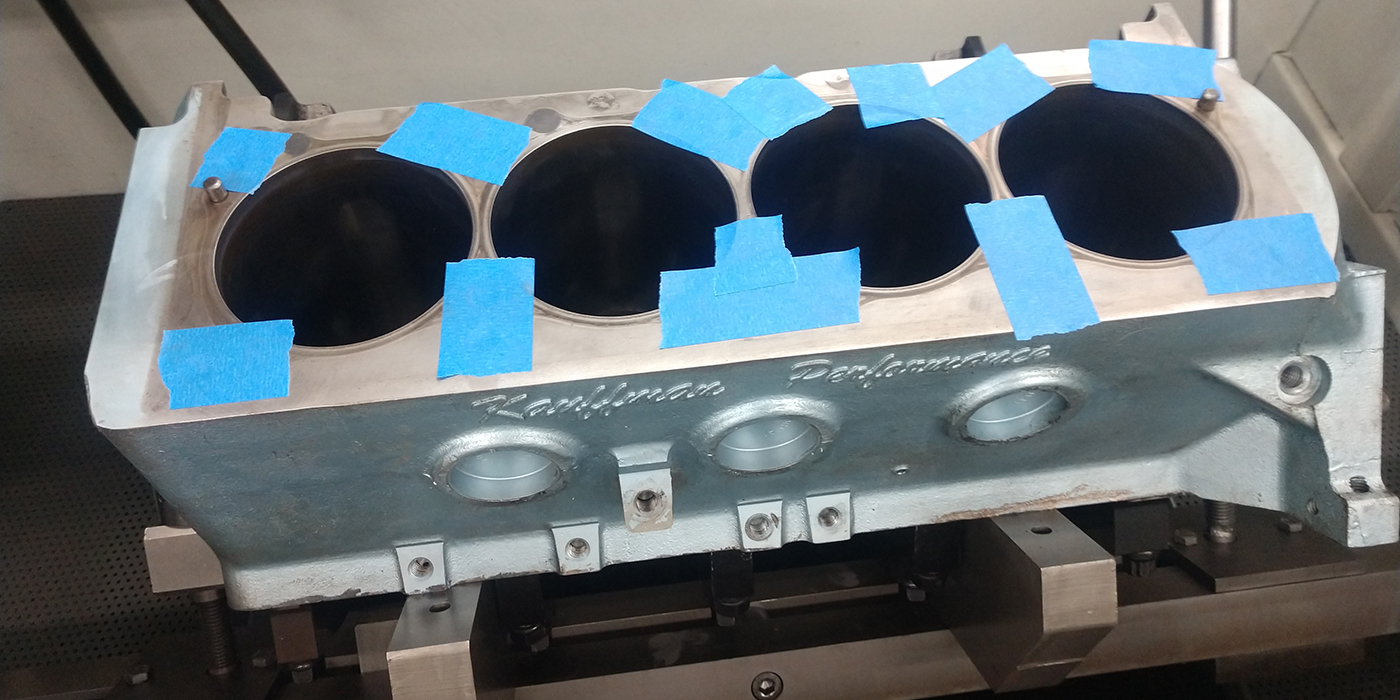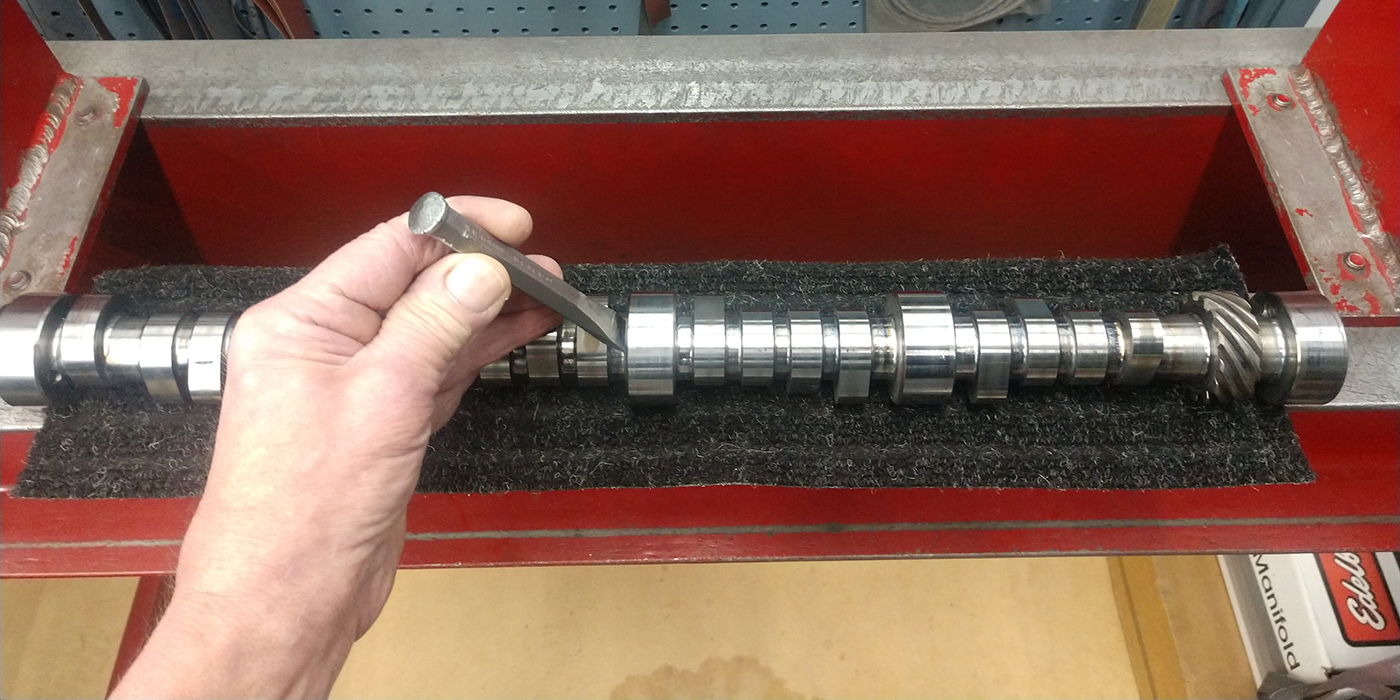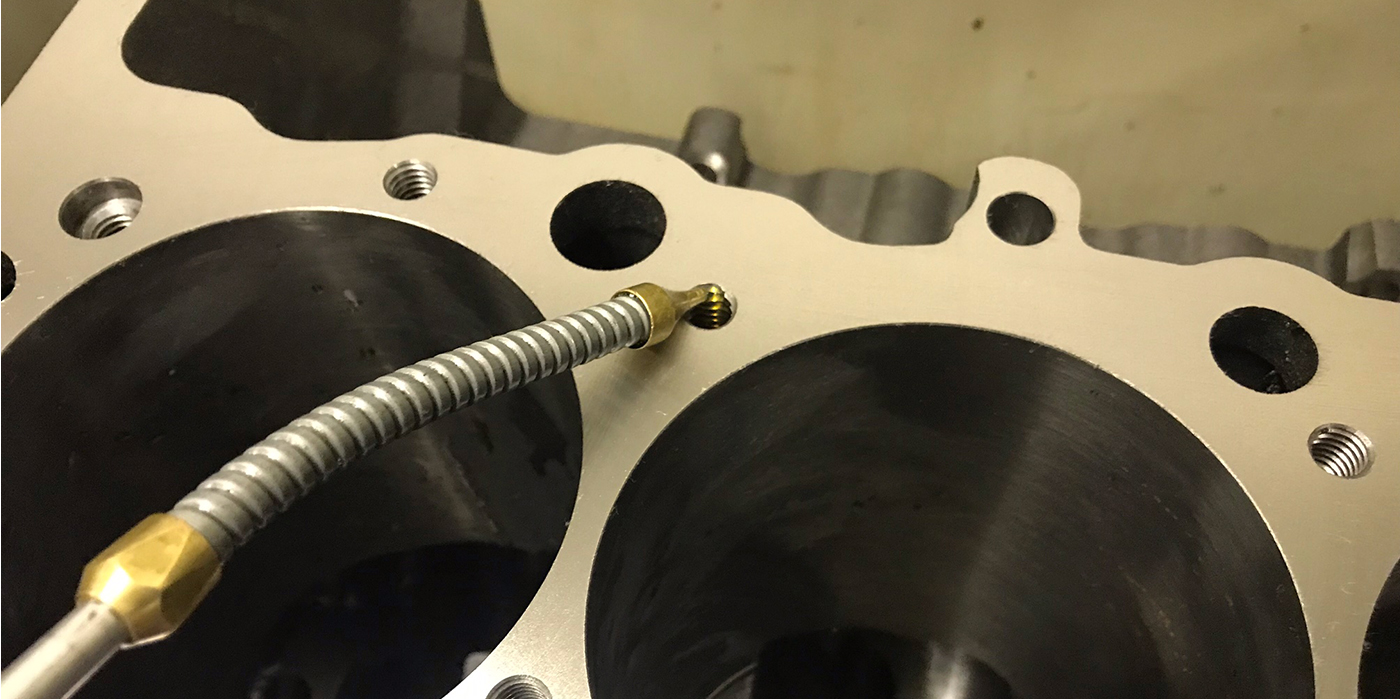VALVE GRINDING TIP
If you use a Sioux valve grinder or any valve grinder that centers on the chamfer of the end of the stem of the valve, it is very important that the chamfer is concentric with the valve. I have found the stem chamfer on some new valves are not concentric as I always reface new valves just to make sure they are true. I find about one or two out of a hundred to be out of shape.
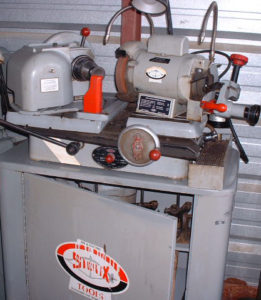
When I use the V-block attachment, I use a piece of wood with a notch cut in it to hold the valve in the V-block. This works much better than trying to hold it down with your thumb.
Wes Schell
Schell Machine
Gregory, SD
LUBRICATING WAYS
When we use our resurfacing machines we usually let it travel just far enough to machine the length of the head or block that we are machining. This practice can cause a lack of lubrication to the Ways of one end of the machine. Once per day I let it travel all the way over to the other side so the machine gets equal Way lubrication.
Dave Matton
D and D Auto Machine
Bloomington, MN
PRESSED INTO LOCKDOWN
When we have stubborn dowels in flywheels we have come up with a few tricks for pulling them. The best trick we came up with was to put the flywheel in the press to hold it stationary.
Now, every hit to engage the sleeve onto the collet was a good solid hit, and every slide upward of the slide hammer put all force into the dowel with no lost action from the flywheel moving. This seemed much more efficient than our previous method of having one guy stand on the flywheel.
Brad Luck
Weaver Auto Parts
Sauk City, WI
FORD FE OIL TUBE REPAIR
After reading the article on building Ford FE engines in the May issue of Engine Builder, I was reminded of a solution I came up with to repair cracked Ford FE blocks.
It was not uncommon in their heyday to see some oil in the cooling system of these motors. It can almost be impossible to detect, but the blocks do crack in the oil passages leading from #2 and #4 cam bearing up to the top of the block to oil the rocker arms and shaft in the head.
After having a comeback, I now do this to all my FE builds. I find used pushrods that measure .314˝-.315˝ in diameter and remove the ball from one end. I use a little blue thread sealer and then I install them down the oil galley until it stops at a lip just before the cam bearing. I take a piece of sheet metal and drill a 5/16˝ hole and place this over the protruding rod down onto the block for protection. I use a cutoff wheel to trim it level with the plate and finish making it flush with a file. The restriction has never been a problem with stock or performance valve train and no more comebacks for cracked oil galleys.
Lewis Andrews
Andrews Automotive
Savannah, MO
GEARING UP FOR ACCURACY
As part of my crank balancing tools, I have an assortment of lower timing gears that I use when balancing a crank that requires the balancer to be installed. Some are slip fit, others I hone to slip fit for ease of removal. This allows me to properly locate the balancer on the crank very quickly and easily and provides exact spacing for accuracy.
Ron Flood
Cedar Machine Service
North Branch, MN
ANOTHER PLUG FOR PLUG REMOVAL
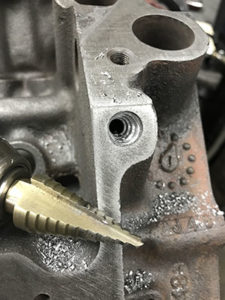
I’ve found that those stubborn press in galley plugs can usually be removed fairly easily with this process. First, and most importantly, you must center punch the plug as close to center as possible.Then, using a Unibit, drill through the plug. Next, using a carbide burr and die grinder, grind one side as close to the block as possible without breaking through. You don’t want to grind into the block casting. Finally, using a hooked style tool, pop it right out.
Darin Driscoll
AMS
Automotive Machine and Supply
Fort Collins, CO
YOUR SECRET MAY BE SOMEONE’S SOLUTION
Shop owners tell us all the time that things they read here in Shop Solutions help them do their jobs faster, easier and more profitably. They sometimes say they wish they could share an idea too.
It’s easy! Just send your best idea with photos or video to us at s[email protected] or [email protected]. Be sure to include your name and your shop name, address and phone number.
You might get into print and you might get into our next video!

